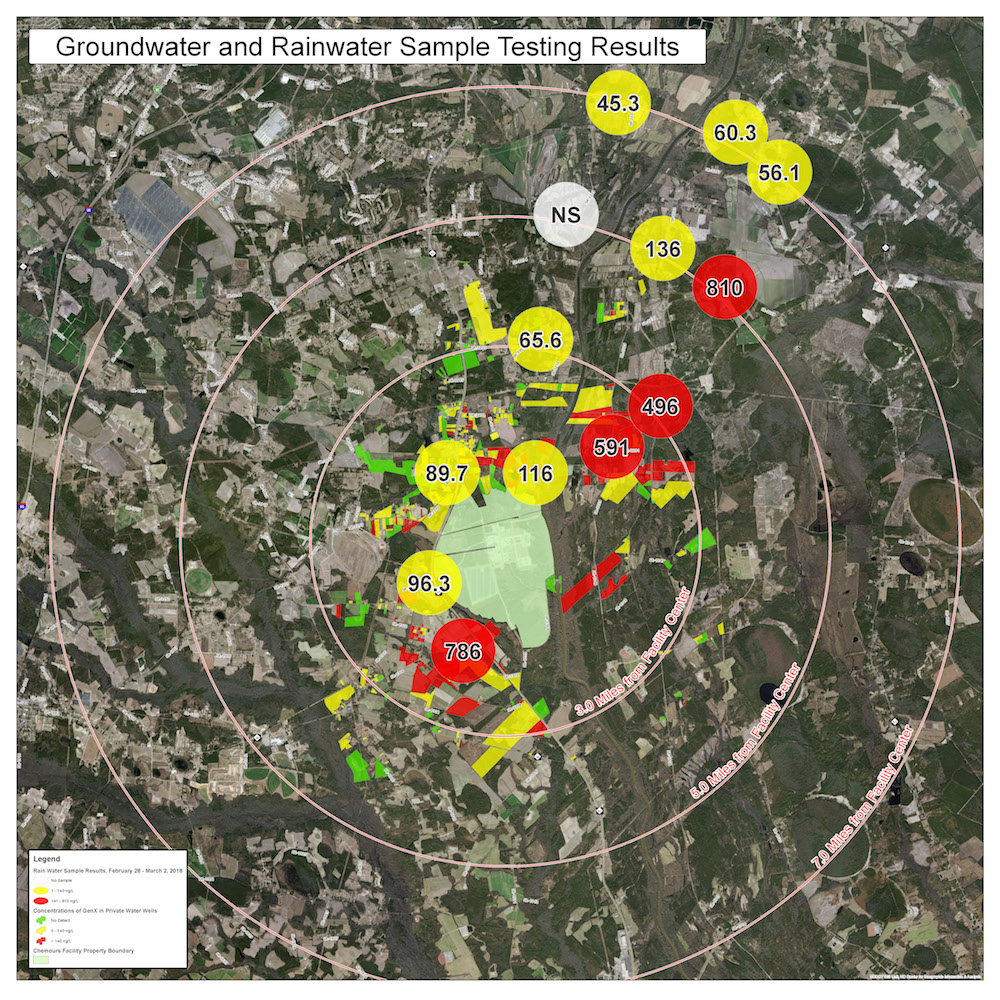Originally posted on The Progressive Pulse by Lisa Sorg.

Chemours is emitting roughly 2,700 pounds — more than a ton — of GenX into the air each year, the Division of Air Quality announced today. That amount is 40 times higher than originally reported in early 2017 and four times higher than the company’s revised estimate submitted to state environmental regulators as recently as October 2017. Coupled with troubling rainwater data, the air reports have prompted the NC Department of Environmental Quality to issue a 60-day notice that it plans to modify the company’s air permit.
In June 2017, Chemours had reported to DEQ that it had emitted 66.6 pounds of GenX-related compounds the previous year. However, last October the company revised its figures to 594 pounds. As more data came in from stack testing at the facility since January, DAQ analyzed the results, which includes emissions from a processing area and leaks originating from the building, and concluded the current total.
These results establish a “causal relationship” between air emissions of GenX from Chemours and “widespread degradation of groundwater,” DAQ said in its letter to the company. Tests of groundwater and drinking water wells have shown high concentrations of GenX, and many residents are now using bottled water supplied by Chemours. The compound enters the groundwater when compounds similar to GenX are emitted through the air, then combine with water — either rain or in the soil — to chemically transform into GenX.
Further evidence bolsters the state’s assertion. Rainwater sampled at 13 locations within seven miles of the Chemours facility near Fayetteville showed levels of GenX as much as six times the state’s provisional health goal, according to data released today by state environmental regulators. Four of the 13 sites reported detections ranging from 496 to 810 parts per trillion; the highest level was detected five miles northeast of the facility, consistent with the prevailing wind direction. The provisional health goal for drinking water is 140 ppt.
DAQ’s letter to Chemours puts the burden on the company to prove it is not responsible for the contaminated groundwater. Otherwise, DAQ wrote, will modify the air quality permit prohibiting any GenX air emissions from the plant.
This week, UNC Wilmington researchers issued a report to the Environmental Review Commission summarizing results from sediment testing from the Cape Fear River, as well as an oyster study. Concentrations ranged from 21.6 parts per billion near Lock and Dam No. 2, to just 4 ppb near Chemours. The reason for the difference is that sediments are transported downstream, so it’s expected the levels would be higher there. These are believed to be the first GenX concentrations ever reported for sediments.
The problem with contaminated sediment is that it doesn’t just stay put; nor does stopping the discharge necessarily halt the pollution. Rain, wind, boats and other disturbances stir up the sediment, sending the compounds into the river– essentially recontaminating it. Researches concluded that GenX in the sediment could “impact sensitive estuarine ecosystems, as well as drinking water utilities, even if it is no longer being released into the environment.”
GenX is also present in biosolids from the water treatment process at the Cape Fear Public Utility Authority’s Sweeney plant. Studies are ongoing to determine more precise measurements, but the implications of GenX in biosolids is that these materials are often used as fertilizer on agricultural fields, such as hay, which are fed to animals.
And finally, UNCW researchers also studied how oysters responded to various levels of GenX. While initial results show that GenX didn’t build up in oyster tissue — positive news for people who eat the shellfish — high levels of the compound killed young oysters. A quarter of the 35 oysters exposed to concentrations of 100 parts per billion died. Researchers are now conducting studies of wild adult oysters and their response to GenX concentrations in surface water.
